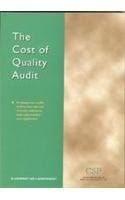
8. DiscRim Innovations plc has launched 500 new products over the last two years. Most but not all of the products have been successful" (by which DiscRim mean they are making a profit within 3 months), otherwise the launch is regarded as a "failure". In order to understand the likely success of new products, DiscRim have collected particulars in the form of 4 key variables X1, X2, X3 and X4) about the 500 products they have already launched. From this information they have created a discriminant analysis model which gives a discriminant function of Y = 1.5X1 2.6X2 +0.4X3 +2.0X4 The cut off score for Y is 2.0, above which a product is classified as a "success'. Of the 500 products, 400 of them were indeed a "success and the model classified 350 of these "successes" correctly. Overall the model suggested that 420 of the products would be a "success". (a) Construct a confusion matrix to show the model's performance on this 'fitted' data. What is the apparent error rate (APER)? (4 marks) (b) Subsequent to formulating the discriminant model DiscRim launch 5 more products (A, B, C, D and E) and use the model to predict "success" or "failure". The variables associated with these 5 products (and whether they actually turn out to be a "success") are given below. They decided to launch these 5 products anyway. Product X1 X2 X3 X4 Actually a "Success"? A 5 4 YES 2 5 1 YES 3 0.5 NO 2 4 2. NO E 2 YES 1 B C D 3 6 5 1 3 0 5 3 What is the actual error rate (AER)? Why is this result surprising? (5 marks) END OF PAPER 8. DiscRim Innovations plc has launched 500 new products over the last two years. Most but not all of the products have been successful" (by which DiscRim mean they are making a profit within 3 months), otherwise the launch is regarded as a "failure". In order to understand the likely success of new products, DiscRim have collected particulars in the form of 4 key variables X1, X2, X3 and X4) about the 500 products they have already launched. From this information they have created a discriminant analysis model which gives a discriminant function of Y = 1.5X1 2.6X2 +0.4X3 +2.0X4 The cut off score for Y is 2.0, above which a product is classified as a "success'. Of the 500 products, 400 of them were indeed a "success and the model classified 350 of these "successes" correctly. Overall the model suggested that 420 of the products would be a "success". (a) Construct a confusion matrix to show the model's performance on this 'fitted' data. What is the apparent error rate (APER)? (4 marks) (b) Subsequent to formulating the discriminant model DiscRim launch 5 more products (A, B, C, D and E) and use the model to predict "success" or "failure". The variables associated with these 5 products (and whether they actually turn out to be a "success") are given below. They decided to launch these 5 products anyway. Product X1 X2 X3 X4 Actually a "Success"? A 5 4 YES 2 5 1 YES 3 0.5 NO 2 4 2. NO E 2 YES 1 B C D 3 6 5 1 3 0 5 3 What is the actual error rate (AER)? Why is this result surprising? (5 marks) END OF PAPER







